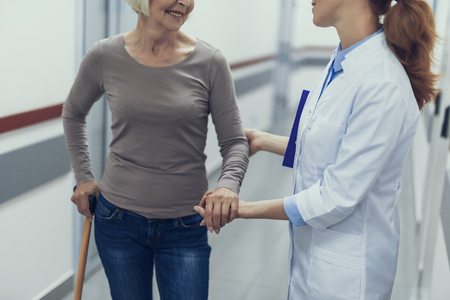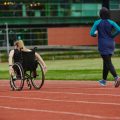1. Introduction: The Urgency of Fall Prevention in Older Adults
Falls are a serious concern for older adults across the United States. Every year, millions of Americans aged 65 and older experience falls, and these incidents can lead to severe injuries, loss of independence, and even death. According to the Centers for Disease Control and Prevention (CDC), about one in four older adults falls each year, but less than half tell their doctor. These numbers highlight just how common—and underreported—falls really are.
Prevalence and Impact of Falls Among Older Americans
| Fact | Details |
|---|---|
| Annual Fall Incidence | About 36 million older adults fall every year in the U.S. |
| Injury Rate | Over 3 million emergency department visits due to falls annually |
| Hospitalizations | More than 800,000 hospitalizations yearly from fall-related injuries |
| Common Injuries | Hip fractures, head injuries, and broken bones are most frequent |
| Cost to Healthcare System | Estimated $50 billion per year in medical costs related to falls |
The consequences of falling go beyond physical injuries. Many older adults who have fallen develop a fear of falling again, leading them to limit their daily activities. This reduced activity can result in further physical decline, social isolation, and decreased quality of life.
The Need for Innovation in Geriatric Rehabilitation
Traditional fall prevention programs often focus on exercise routines, home modifications, and education. While these approaches help, the high rates of falls show that more effective solutions are needed. With advancements in technology—like artificial intelligence (AI) and data analytics—there is hope for more personalized, proactive approaches to fall prevention. By harnessing real-time data and predictive tools, healthcare providers can better identify risks and intervene before a fall occurs. This shift is crucial for improving outcomes and supporting healthy aging in America’s rapidly growing senior population.
2. Leveraging Artificial Intelligence: Transforming Risk Assessment
Artificial Intelligence (AI) is quickly changing the way we approach fall prevention for older adults in both clinical and home settings. By using machine learning and predictive algorithms, healthcare providers can spot potential fall risks earlier and more accurately than ever before. This shift not only supports doctors and therapists but also empowers families to take a more active role in their loved ones’ safety.
How AI Identifies Fall Risks
Traditional risk assessments often rely on checklists or periodic evaluations done by healthcare professionals. These methods can miss subtle warning signs that happen between visits. AI-powered systems, on the other hand, continuously analyze a wide range of data—including walking patterns, balance, previous medical history, and even daily activity levels—to detect changes that may indicate an increased risk of falling.
Machine Learning at Work
Machine learning algorithms are trained with large datasets from thousands of patients. Over time, these systems learn to recognize patterns that humans might overlook. For example, a slight change in walking speed or frequency of movement could signal a higher chance of falling. AI tools can send alerts to caregivers or clinicians when they notice these patterns, allowing for timely interventions.
Predictive Algorithms in Everyday Life
Predictive algorithms work behind the scenes in wearable devices like smartwatches or sensor-equipped shoes. These devices gather real-time information and use AI to monitor for risky behaviors or environments—such as unsteady walking or cluttered living spaces. The table below shows some common AI-powered tools used in geriatric rehabilitation:
| Tool | Main Function | Where Its Used |
|---|---|---|
| Wearable Sensors | Track movement and detect falls | At home, senior centers |
| Smart Cameras | Analyze gait and posture changes | Rehab clinics, assisted living |
| Mobile Apps | Self-assessment and reminders | Personal smartphones, tablets |
| EHR-Integrated AI Tools | Analyze health records for risk factors | Hospitals, outpatient clinics |
Benefits for Older Adults and Caregivers
The biggest advantage of using AI in fall prevention is early detection. Families get peace of mind knowing that technology is always on the lookout for potential dangers. Healthcare teams receive actionable insights so they can tailor rehabilitation plans or suggest adjustments in daily routines—before a fall happens. With continued improvements in AI accuracy and accessibility, the future looks brighter for seniors aiming to stay active and independent.

3. Real-Time Data Analytics: Personalized Care and Intervention
Wearable Sensors: A Game-Changer in Fall Prevention
Thanks to advances in technology, wearable sensors are becoming a key tool in helping older adults stay safe and independent. These small devices can be worn on the wrist, ankle, or even sewn into clothing. They track important movement data like walking speed, balance, and sudden changes in posture. By using these sensors, healthcare professionals get a clear, real-time view of each persons mobility and fall risk.
How Data Analytics Powers Individualized Feedback
The real magic happens when artificial intelligence (AI) and data analytics step in. The data collected by wearable sensors is analyzed instantly to spot patterns or warning signs—like slower reaction times or unsteady walking. This analysis helps doctors and therapists understand exactly what each senior needs to stay safe.
Benefits of Real-Time Monitoring and Feedback
| Feature | How It Helps Prevent Falls |
|---|---|
| Real-Time Alerts | Sends immediate notifications to caregivers or family if a fall is likely or has occurred |
| Personalized Exercises | Recommends specific balance or strength activities based on the user’s current abilities |
| Progress Tracking | Shows improvements or setbacks, so care plans can be adjusted quickly |
| Remote Monitoring | Allows healthcare teams to check in without the need for frequent clinic visits |
Timely Interventions Make All the Difference
With instant feedback from wearable devices, interventions can happen right away. For example, if someone starts walking less steadily, their rehab team can recommend new exercises or suggest using a walker before an accident happens. This proactive approach helps prevent falls rather than just responding after they occur.
The Impact on Seniors’ Everyday Lives
By combining AI with wearable sensors, older adults get care that fits their lifestyle and unique needs. They gain confidence knowing help is always close by, while families and healthcare providers have peace of mind through continuous monitoring and support.
4. Ethical, Cultural, and Practical Considerations
Addressing Data Privacy in AI-Driven Fall Prevention
When using artificial intelligence (AI) and data analytics to help prevent falls among older adults, protecting personal information is a top concern. In the United States, laws like HIPAA (Health Insurance Portability and Accountability Act) set strict rules about how health data must be handled. Any digital tools or platforms collecting information from seniors must ensure that this data is secure, kept private, and only shared with authorized individuals. It’s important for healthcare providers to explain in simple language how these technologies work and what steps are being taken to keep patient information safe.
Technological Accessibility for Older Adults
Not every older adult in the US has the same level of comfort with technology. Some may own smartphones and use apps regularly, while others might find new devices confusing or intimidating. To make AI-based fall prevention tools truly helpful, developers and healthcare teams need to focus on easy-to-use designs, clear instructions, and ongoing support for both seniors and their caregivers.
| Challenge | Possible Solution |
|---|---|
| Complex interfaces | Use large buttons, simple language, and voice commands |
| Lack of internet access | Offer offline features or community-based tech hubs |
| Limited tech skills | Provide free training sessions at senior centers or clinics |
Culturally Competent Care in a Diverse Society
The United States is home to people from many different backgrounds, cultures, and languages. For AI-powered fall prevention systems to be effective for everyone, they need to consider these differences. This means offering materials in multiple languages, respecting cultural beliefs about health and aging, and involving family members when appropriate.
Key Aspects of Culturally Competent AI Solutions:
- Language Options: Provide instructions and support in English, Spanish, Chinese, and other common languages spoken by local communities.
- Sensitivity Training: Ensure healthcare providers understand cultural values around independence, caregiving roles, and attitudes toward technology.
- Community Engagement: Work with community leaders to build trust and tailor solutions to specific needs.
Summary Table: Ethical and Practical Considerations in the US Context
| Consideration | Description | Action Steps |
|---|---|---|
| Data Privacy | Protecting sensitive health information under HIPAA laws | Use secure systems, educate patients about privacy policies |
| Accessibility | Ensuring all older adults can use new technology easily | Simplify design, offer training/support programs |
| Cultural Competence | Respecting cultural differences in care preferences and communication styles | Translate materials, train staff in cultural awareness, partner with local groups |
Tackling these ethical, cultural, and practical issues head-on will help make sure that advances in AI and data analytics lead to better outcomes for all older adults across the US.
5. Looking Ahead: Integrating AI Into Mainstream Geriatric Rehab
The future of fall prevention is rapidly evolving as artificial intelligence (AI) and data analytics become more accessible in geriatric rehabilitation. As we look ahead, it’s important to consider how these technologies can be woven into daily practice, what policy changes are needed, and how different experts can work together for the best results.
Policy Implications and Guidelines
For AI-powered fall prevention solutions to become standard in clinics, assisted living centers, and home care, clear policies and guidelines are crucial. Policymakers need to address:
- Data Privacy: Ensuring older adults’ health data is protected under laws like HIPAA.
- Reimbursement Models: Updating Medicare and insurance coverage so facilities are incentivized to use AI-based tools.
- Quality Standards: Creating benchmarks to make sure AI systems are accurate and safe for seniors.
Interdisciplinary Collaboration
AI in geriatric rehab works best when people from many backgrounds collaborate. Here’s a look at key roles:
| Professional | Contribution |
|---|---|
| Physical Therapists | Provide expertise on movement patterns and fall risks |
| Data Scientists | Develop algorithms that detect early warning signs of falls |
| Nurses & Caregivers | Give feedback on how AI tools fit into daily routines |
| Policy Experts | Create regulations that support ethical use of AI in elder care |
| Seniors & Families | Share insights on comfort levels and practical needs |
Strategies for Widespread Adoption
The road to making AI a regular part of geriatric rehab involves several strategies:
- User-Friendly Design: Tools must be simple for both clinicians and seniors to use—think voice assistants or wearable sensors with easy-to-read displays.
- Pilot Programs: Start small with community-based trials to show success before expanding further.
- Education & Training: Offer ongoing workshops for healthcare teams so they stay comfortable with new tech.
- Community Engagement: Involve local organizations and families in the conversation to ensure solutions truly meet the needs of older adults in their unique settings.
- Feedback Loops: Regularly collect input from users and caregivers to improve systems over time.
A Vision for the Future
If these steps are followed, AI-driven fall prevention will shift from being a futuristic idea to an everyday reality in American geriatric rehabilitation. By focusing on collaboration, thoughtful policy, and practical strategies, we can help seniors live safer, more independent lives while giving caregivers confidence in the latest technology.


